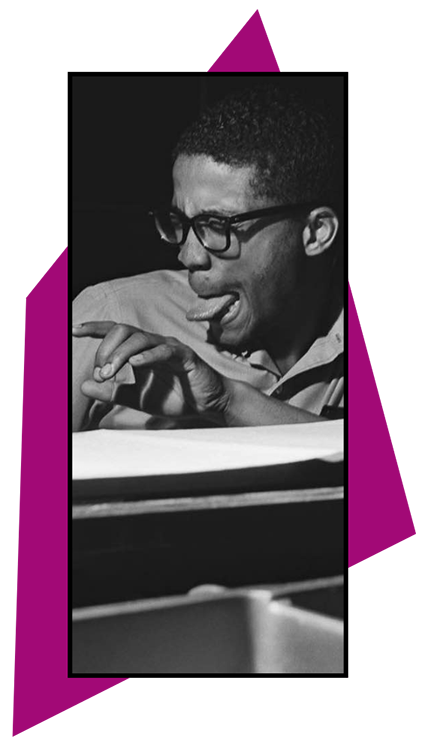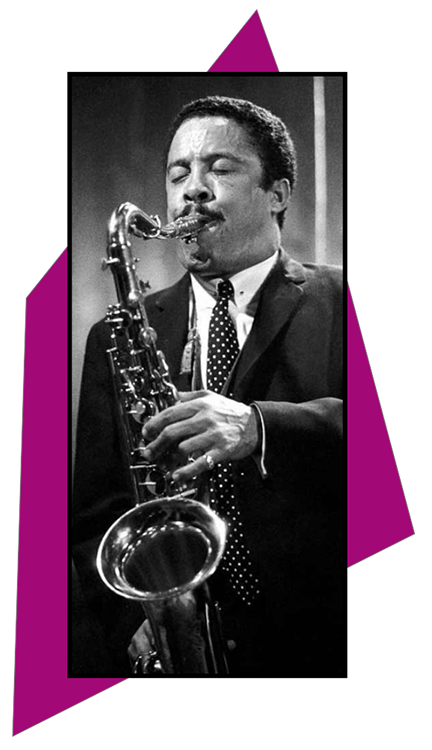
ALFRED LION
FRANCIS WOLFF
Two Germans immigrant who founded the jazz record company in 1939. Blue Note Records influence the evolution on music and sound, style and technicals standars. Historically, Blue Note has principally been associated with the "hard bop" style of jazz (mixing bebop with other forms of music including soul, blues, rhythm and blues and gospel), but also recorded essential albums in the avant-garde and free styles of jazz. Horace Silver, Jimmy Smith, Freddie Hubbard, Lee Morgan, Art Blakey, Grant Green, Hank Mobley, Wayne Shorter, Bobby Hutcherson, and Jackie McLean were among the label's leading artists. During its heyday, the 1950s and 1960s, the photography and graphic art of Reid Miles created a series of iconic album covers, often incorporating session photos by Wolff, which added to Blue Note's artistic reputation.
Early Years

Alfred Lion
First heard jazz as a young boy in Berlin. He settled in New York City in 1937, and shortly after the first From Spirituals to Swing concert, recorded pianists Albert Ammons and Meade Lux Lewis in 1939 during a one-day session in a rented studio. The Blue Note label initially consisted of Lion and Max Margulis, a communist writer who funded the project. The label's first releases were traditional "hot" jazz and boogie woogie, and the label's first hit was a performance of "Summertime" by soprano saxophonist Sidney Bechet, which Bechet had been unable to record for the established companies. Musicians were supplied with alcoholic refreshments, and recorded in the early hours of the morning after their evening's work in clubs and bars had finished. The label soon became known for treating musicians uncommonly well—setting up recording sessions at congenial times, and allowing the artists to be involved in all aspects of the record's production.

Francis Wolff
A professional photographer, emigrated to the US at the end of 1939 and soon joined forces with Lion, a childhood friend. In 1941, Lion was drafted into the army for two years. Milt Gabler at the Commodore Music Store offered storage facilities and helped keep the catalog in print, with Wolff working for him. By late 1943, the label was back in business recording musicians and supplying records to the armed forces. Willing to record artists that most other labels would consider to be uncommercial, in December 1943 the label initiated more sessions with artists such as pianist Art Hodes, trumpeter Sidney DeParis, clarinetist Edmond Hall, and Harlem stride pianist James P. Johnson, who was returning to a high degree of musical activity after having largely recovered from a stroke suffered in 1940.
Hard bop and beyond
In 1951, Blue Note issued their first vinyl 10" releases. The label was soon recording emerging talent such as Horace Silver (who would stay with Blue Note for a quarter of a century) and Clifford Brown. Meanwhile, Milt Jackson (as the leader of what became the Modern Jazz Quartet) and the Jazz Messengers (originally organised as a cooperative, but soon to become Art Blakey's group) recorded for Blue Note. The Milt Jackson Quartet session was a one-off, but Blakey's various groups recorded for the label extensively, if intermittently, for the next decade.

R. Van Gelder
Recorded most Blue Note releases from 1953, after Lion and Van Gelder's mutual friend, saxophonist and composer Gil Melle, introduced them. A difference between Blue Note and other independent labels (for example Prestige Records, who also employed Van Gelder) was that musicians were paid for rehearsal time prior to the recording session: this helped ensure a better end result on the record. Producer Bob Porter of Prestige Records once said that "The difference between Blue Note and Prestige is two days' rehearsal. When the recording industry switched to 12" LP in the mid-1950s, Blue Note was in difficulties. Their catalog on the now outmoded 10" LP now had to be recreated on the newer format. Lion contemplated selling out to Atlantic at this time, an option which was not acted upon. A musician who was to become one of the label's best sellers was discovered. Jimmy Smith, the Hammond organist was signed in 1956, and performed on the label's first 12" LP album of new recordings.
Life is a lot like jazz - it's best when you improvise.
― George Gershwin.

Jimmy
SMITH

Eric
DOLPHY

Horace
PARLAN

Herbie
HANCOCK

Wayne
Shorter

Freddie
Hubbard

Lee
Morgan

Kenny
Dorham

Tina
Brooks

Hank
Mobley

Dexter
Gordon

Kenny
Burrel

Art
Blakey

Johnny
Griffin

Cannonball
Adderley

Art
Taylor

Larry
Young

Ornette
Coleman

Jackie
McLean



